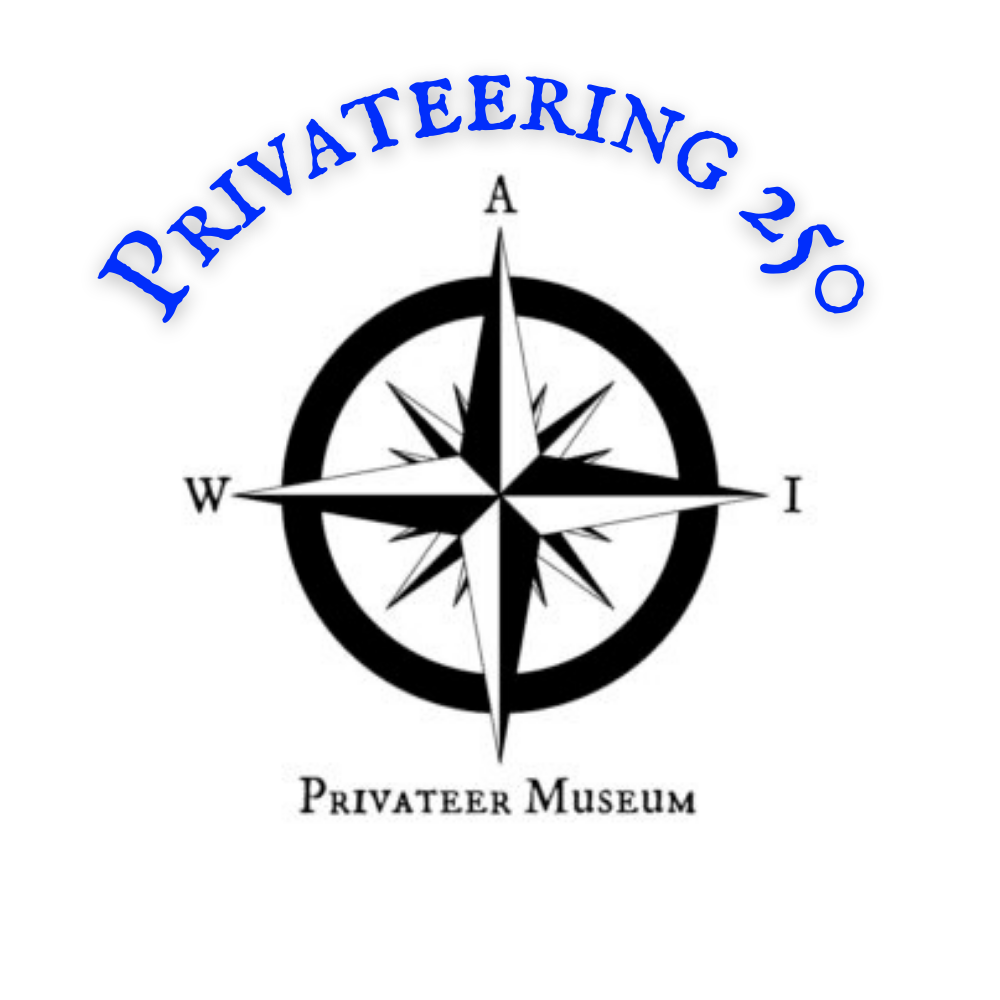Station II
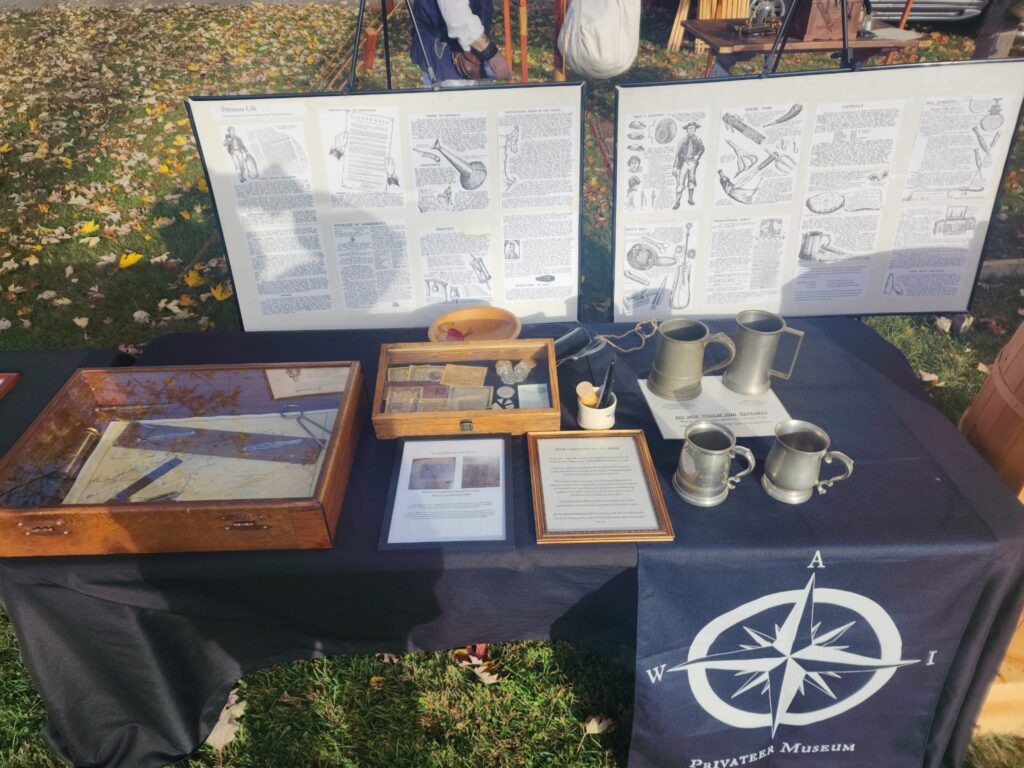
The second Station we like to call Privateer Life… It encompasses quite a bit of the daily life one would expect to find aboard a ship, as well as everyday items and tools you would expect to find on any privateer or other vessel during the war.
It is important to note that Privateer refers to the vessel, and Privateersman a member of the crew.
The “big boards”
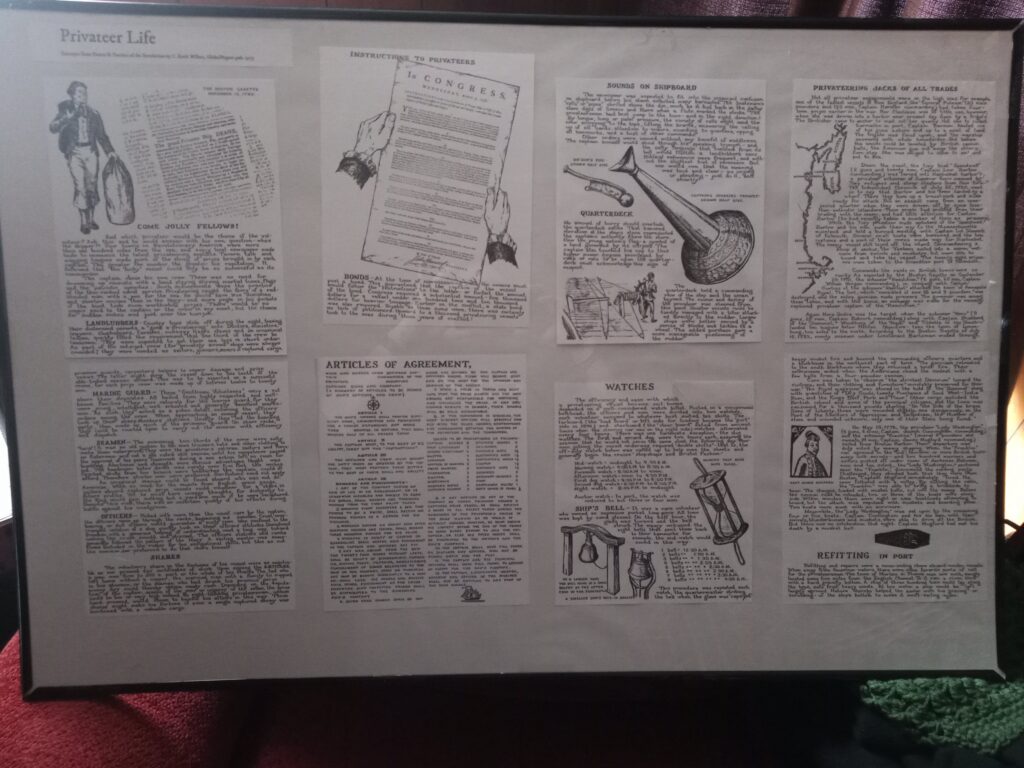

These boards are known as “the big boards” by museum staff and volunteers, mainly due to their large size and the abundance of content regarding the basics of life on a Privateer. Many various topics can be found, and people usually take their time to look at them all when visiting in person.
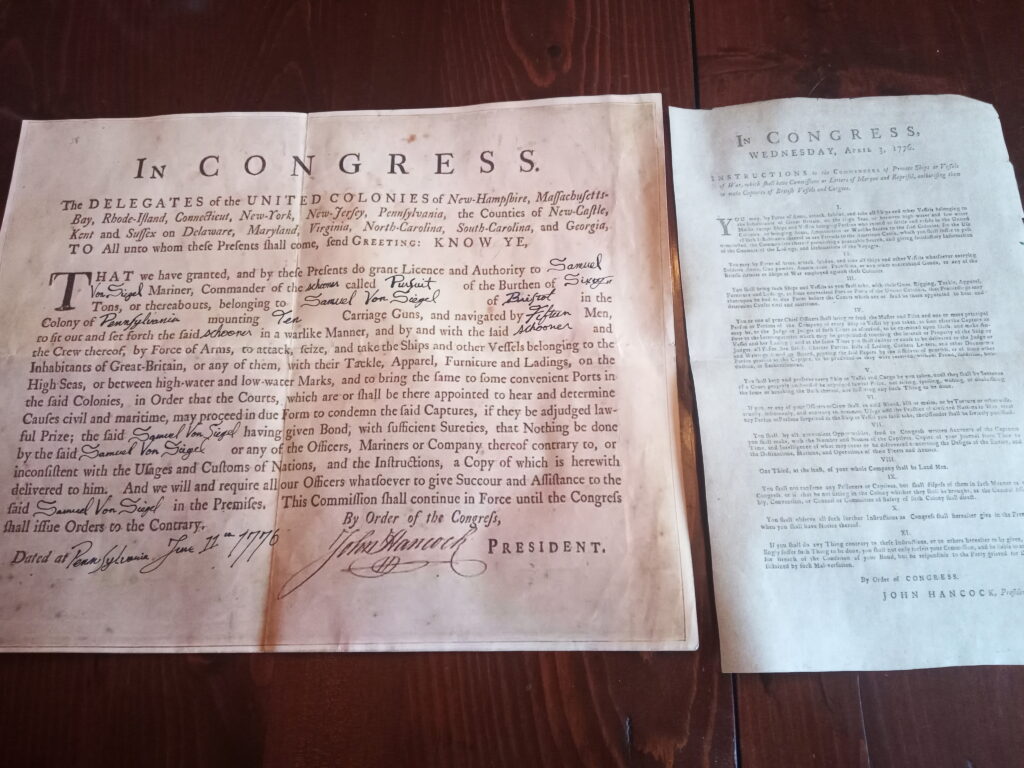
Let’s start with the beginning of any Privateer. The Letter of Marque & Reprisal along with the Letter of Instructions to Privateers. These two documents are what make the efforts of privateersmen legal. The average cost of these documents in 1776 was 2800 pounds (Sterling) or the equivalent of roughly $749,584.60USD in today’s money (as of 7 August 2023).
The Letter of Marque spells out the details of the vessel and crew allowed to carry out such operations and must be signed by the owner or Captain of the vessel.
The Letter of Instruction is what acts as both rules of engagement and Congressional oversight. This particular document also states what behaviors will not be tolerated. Anyone in witness of Captain and crews of Privateers that disobey can be reported on and potentially lose their bond, ship, and freedom. So it was in their own best interests to follow the rules. The same was for both the Continental and British Privateers.
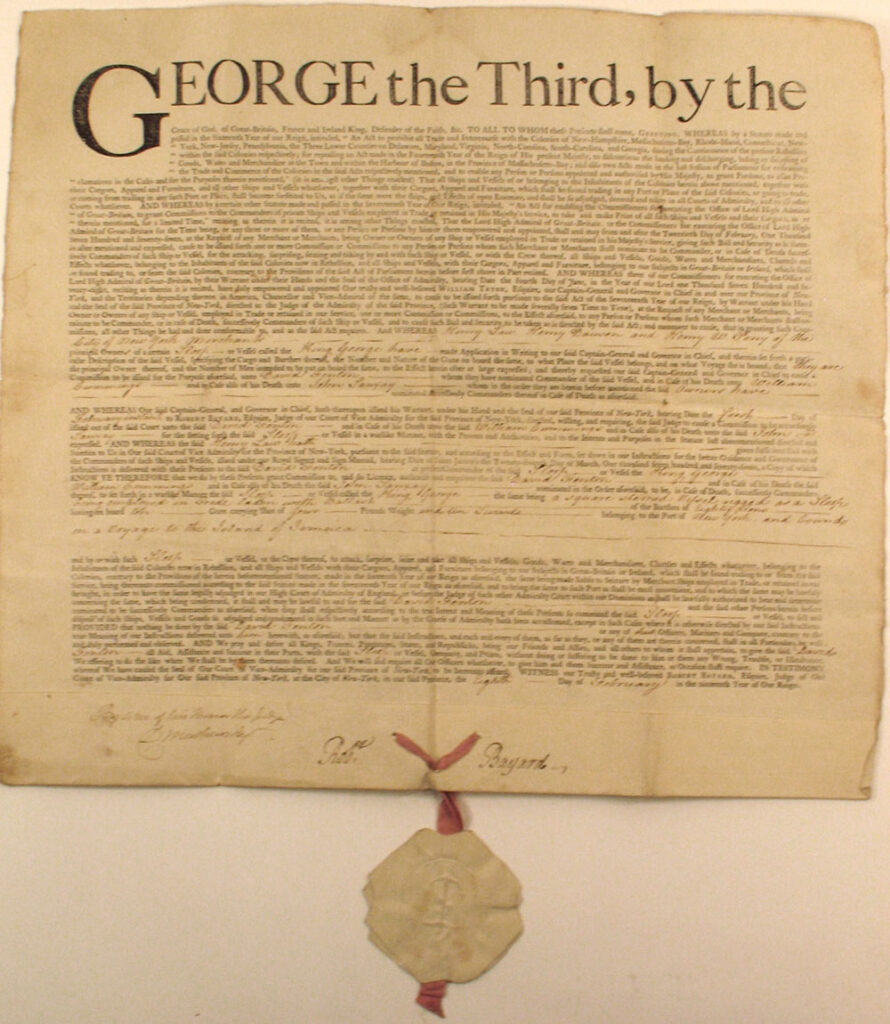

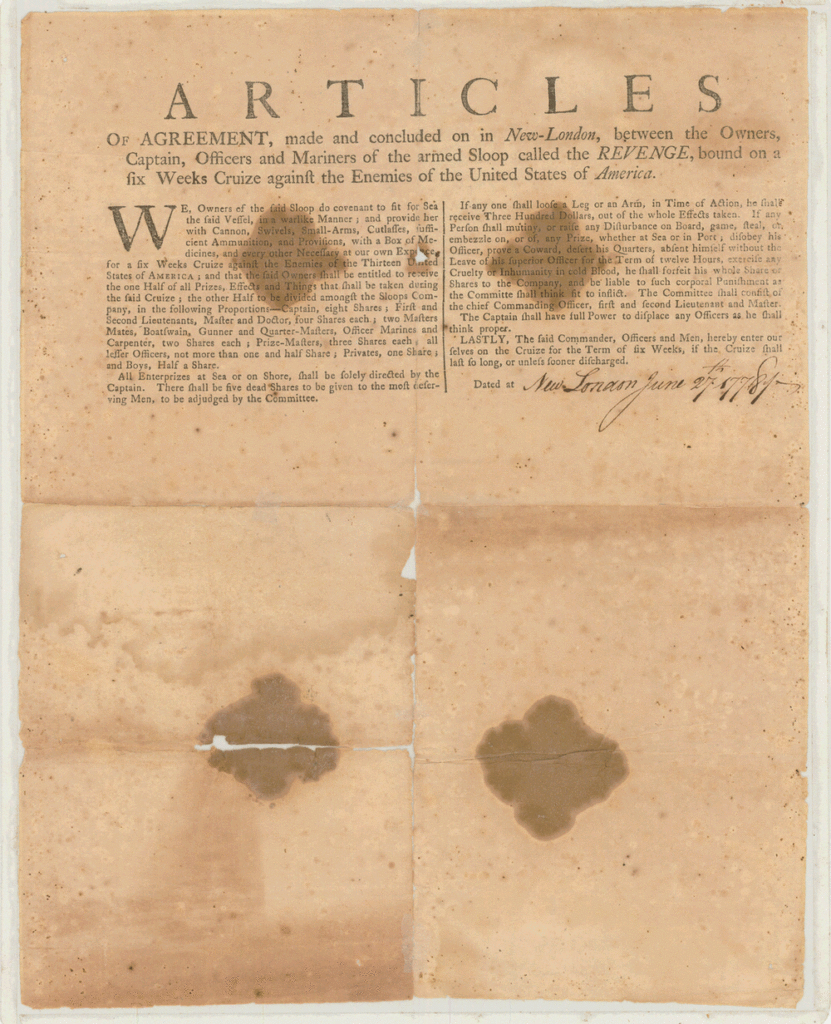
Articles of agreement are the next most important document. Possibly the most important overall as this is the agreement between the ship’s owners, Captain, & Crew. This particular document can state in simple, or more advanced terms, the arrangements and breakdown of pay and prizes awarded, healthcare should an accident cause dismemberment or injury, death benefits, and more. These documents can be one page, or several depending upon the amount of detail needed. Officers and all crew sign this, and no business covered on it can be disputed. It is an actual physical contract that things will go the way they are stated.
Food.
It’s been said that sailors food was never any good. Mouldy bread and weavels have been sung about for generations. While that may be the case on some later naval vessels, civillian captain’s were smarter than that. They put their Quartermaster and crews in charge of their food. A well fed crew is a happy crew, and a happy crew is a productive one.
Fruits, vegetables (mainly root vegetables like carrots, parsnips, potatoes), Meat and fish (mostly preserved), Rum (ahh yes, the rum…) and assorted spirits for officers, and ships biscuits (known as hard tack in the 19th & 20th centuries). Soups and Stews were the easiest to make and keep on hand with no refrigeration.


Cloathing.
Most wore what they had on their backs, if they had money they might have a change of clothes, even good ones for shore. If the ship was fortunate enough to have a ships store with slops, most would take advantage of them to keep their “good” clothes good. Sailors knew how to sew at least patches (as was a part of mending sails), so they would keep up on their “patch work” in their down time to keep their cloathing as functional as possible. A good pair of shoes was a stable and most, if not all, had at least a functional pair. Bare feet were not common, and boots were often a luxury most wouldn’t bother with as they were extremely impractical and expensive.
18th Century Shaving and Facial Hair.
From 1700 – 1799 the fashion for whatever reason was to be clean-shaven. There were VERY FEW exceptions to this. Hessians, those of Orthodox faiths (Jewish & Christian alike), the destitute (poor or insane), and those fugitives hiding from press gangs and on the run.
“The average Jack Tar went clean-shaven. He might be forced to grow out a beard when wrecked on a distant shore, or destitute on the street, but by far the overwhelming majority of sailors took a razor to their facial hair.” -The British Tars on Beards & Facial Hair
In both armies (British & Continental) it was mandatory for soldiers to shave once every 3 days.
As we privateersmen were civilians, they would have kept to the social norms of the day as best they could as time, cost, and situations were made available to them.


Colonial Currencies. During this time, the colonies were not allowed to mint their own coins, so coins from England, Spain, Dutch East India Corp (V.O.C.), and Printed monies along with trading of goods and services (Bartering) were commonplace. Each colony had their own printed money, and was only good within that colony, or good to those who did business in other colonies.
In the picture to the Left there are examples, and the one on the white paper is an authentic piece of Maryland currency printed in 1770 by Anne Catherine Hoof Greene. She is an important woman from colonial times as she had the contract to print all of Maryland colony’s money at that time.
Celestial Navigation or 18th Century GPS.
Unlike today’s modern GPS that is used, Captain’s had to navigate using charts, Ledgers, the Sun and stars, and an assortment of tools such as the Octant.
This would have been a useful skill to have for any sailor, and quite often was taught to those who had an aptitude for reading and writing.
The Octant was replaced by the Sextant in the following century, and was used primarily on seafaring vessels and early astronavigation by aircraft through the late 20th century, replaced by GPS in the mid 1990’s
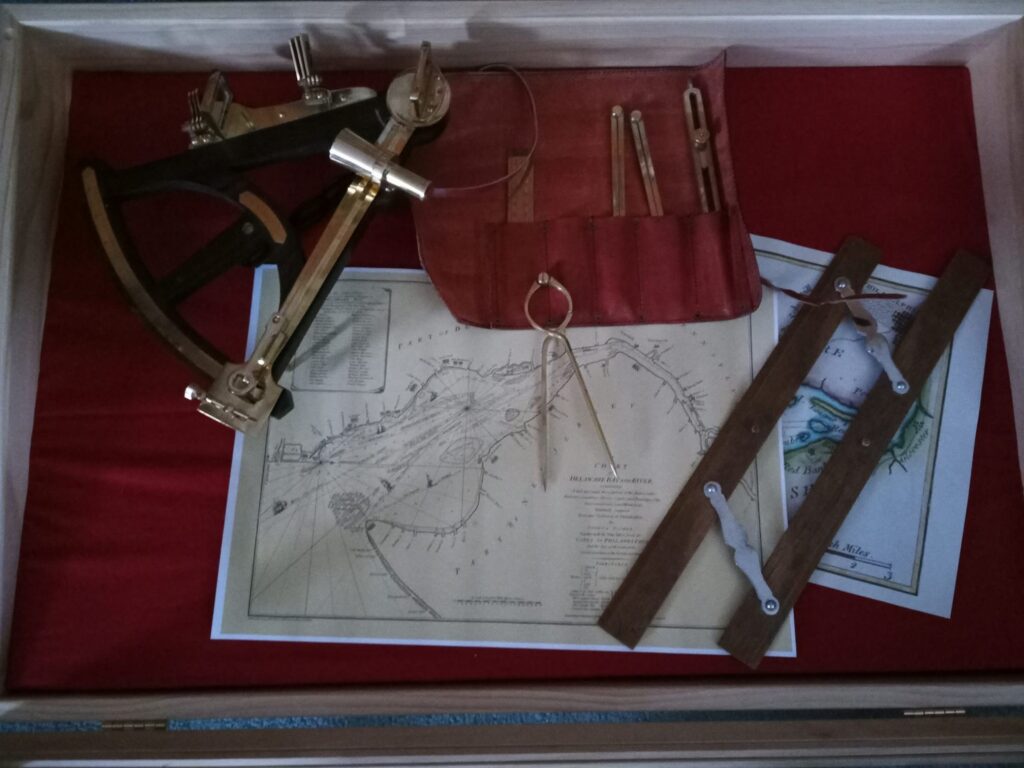
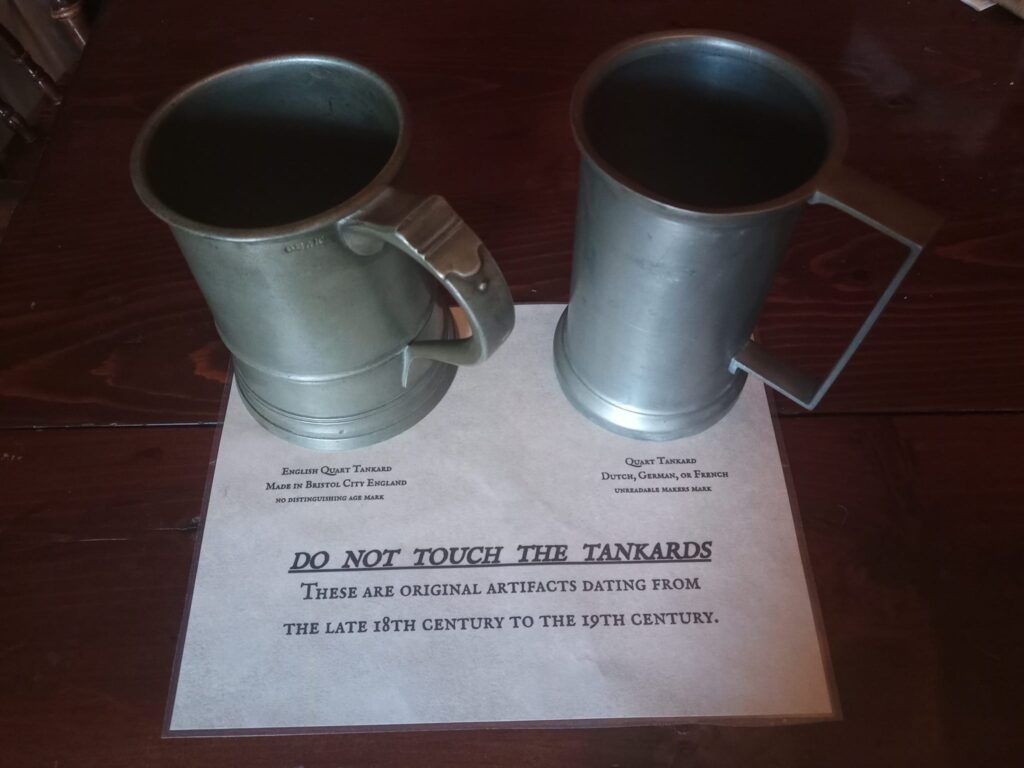
Drinking & Social Interactions.
Taverns, Coffee Houses, & Tea Houses were common at the time. The Tavern was favored by many a sailor. It is where crews went to unwind, take part in the drinking of spirits, smoking, company of questionable spinsters, and of course games of chance. Most sailors would end up spending most, if not all, of their coin on these distractions from the world.
The two tankards shown are authentic pieces from the late 18th century and are frequently on display wherever the museum is set up at sites. One English and the other is possubly Dutch.
Gaming & Gambling.
Games & Gambling were widespread among sailors. Gambling for money was often frowned upon by all, but on some ships where gambling was allowed openly was done not with money, but with food, switching a watch (maybe with permission), clothing, or some other bartered service or goods.
Common games were Draughts (checkers), cards, dice, shut the box, and many others still found today. Most were changed into games of chance to add that element of risk into it to add to one’s own wealth, or to stave off the doldrums (boredom)

